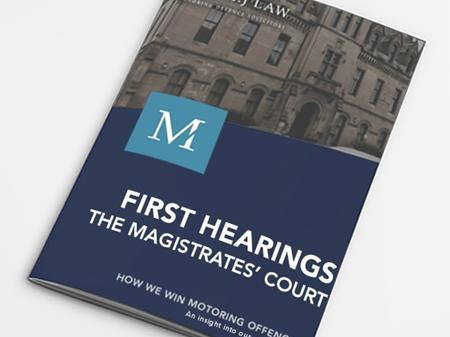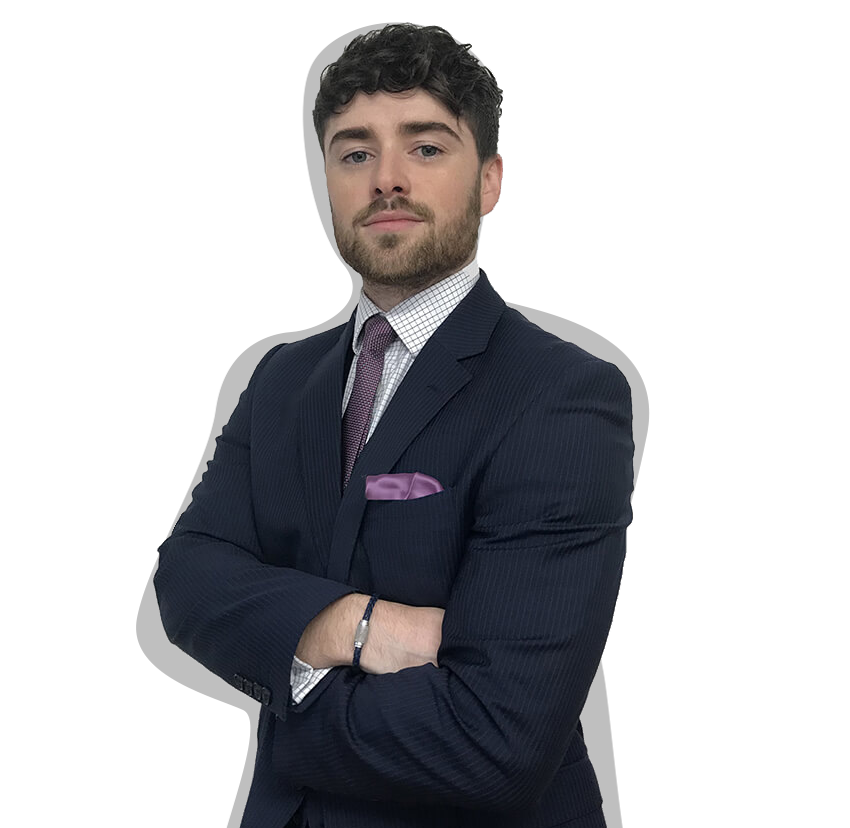Cannabis Driving Solicitors
The legal limit for Cannabis (THC) is 2 micrograms per litre of blood (2ug). This is the lowest legal limit for any drug under Section 5A. If convicted, you would receive a 12 month driving disqualification.
We can help you with:
- Finding fault with police procedure
- Challenging blood results
- Identifying defences
- Next steps
Drug Driving & Cannabis
(Delta-9-Tetrahydrocannabinol)
| Drug | Legal Limit (Blood) |
| Delta – 9 -Tetrahydrocannibinol (Cannabis) | 2µg/L |
Cannabis contains a chemical compound known as tetrahydrocannabinol (THC). It is one of the most commonly abused drugs on the planet. When you smoke or ingest cannabis, THC travels into the bloodstream and eventually binds to cannabinoid receptors throughout your body.
When the Government first decided to set legal limits for certain drugs, they instructed a panel of experts to offer guidance on drug levels. The Government stressed that the new limits should be ‘zero tolerance’. After many months of research, experts recommended a zero-tolerance limit of 5 micrograms for cannabis - more than twice the limit finally imposed by the Government!


Studies have shown that actual impairment after consuming cannabis subsides after two and a half hours, but the roadside test is likely to show positive for up to 24 hours, well after the effects have worn off. One study conducted by Dr Edward Cone showed that a single ‘puff’ on a cannabis joint produced an average immediate blood THC concentration of 160 micrograms per litre of blood! However, the effects wore off almost immediately.
What is the legal limit for cannabis?
There is no legal limit for cannabis. The legal limit of 2 micrograms applies only to THC - the psychoactive component of cannabis. To illustrate how low this is - the legal limit for alcohol is approximately 400,000 times greater than for THC.
Surprisingly, most other European countries have legal limits lower than ours, but most will only ban drivers for 1 - 6 months. The minimum disqualification in the UK is 12 months, but many motorists are banned for longer.
How long does cannabis stay in your blood?
It is not possible to say how much cannabis would put you over the legal limit; there are too many variables. In occasional users, THC levels should drop below 2ug within 7 hours, whereas in heavy users, THC levels will remain above 2ug for up to 24 hours. As a general rule, any consumption of cannabis 7-12 hours prior to the blood test is likely to put you above the legal limit.
Remember that medication, alcohol, gender, age, diet and lifestyle can all affect the rate at which you eliminate THC.
Did your roadside swab test positive for cannabis?
The police currently use devices known as 'DrugWipes' to test for cocaine and cannabis at the roadside. All DrugWipes come with instructions, but time and time again the police manage to make mistakes.
How to spot a mistake;
- The officer touched the sampling pads when removing the blue tester
- The officer did not hold the DrugWipe 'bottom down' whilst waiting
- The officer waited less than 8 minutes
- The test took much longer than 8 minutes
- The test was not rested horizontally whilst analysing
- The officer used his torch to examine the DrugWipe
- A faint line appeared
A roadside DrugWipe will not test for impairment, it will only test for traces of cannabis and cocaine. You could fail the test even if you're not impaired.
If you were arrested on suspicion of drug driving, it was probably because you failed the roadside swab test. These tests are non-evidential (meaning they cannot form the basis of a prosecution - and shouldn't be referred to in court) and they do not show whether you exceed the prescribed limit. In theory, you could fail to swab test but 'pass' the blood test. In reality, of course, any person who fails the roadside test for cannabis will almost certainly fail the blood test too.
How long before I can drive after smoking weed?
An average sized joint contains approximately 25mg of THC. This would cause a peak concentration of 120 micrograms in just 8 minutes. The legal limit is 2 micrograms.
The elimination rate of a drug is measured by its ‘half-life’. This is the period of time required for the drug in your system to be reduced by one-half.
Most drugs have a relatively straightforward half-life, making it simple to determine elimination rates. Nearly 100 metabolites have been identified for THC, all of which have a different half-life. The true elimination half-life of THC is difficult to calculate. The speed at which THC leaves your system changes from one person to another.
Smoking cannabis is the quickest way to absorb the THC. THC will reach a peak concentration within 3 – 10 minutes after the onset of smoking. A single cannabis joint will cause an average peak concentration of 84.3 – 162 micrograms (the legal limit being 2 micrograms). This will then drop rapidly over the following 4 – 6 hours, with a blood concentration of less than 2 micrograms expected to be reached within 7 – 12 hours (depending upon your tolerance to THC).
Please note that there are no ‘accepted standards’ for measuring the elimination rate of THC. The above information is based upon multiple studies and scientific findings.
Drug Driving Cannabis Defences
How we win drug driving cannabis cases
THC is not easy to detect in blood. This presents practical problems for laboratories when trying to analyse blood and produce accurate results. We do not intend to ‘spill our trade secrets’ on this page, but we’re quite happy to outline the four key aspects of a cannabis drug driving defence.
-
The 'one third' rule - Has it been applied?
The most common method of analysis for THC is Gas-Chromotography Mass-Spectometry (GC-MS). This is considered the ‘gold standard’ in commercial drug testing. GC-MS is a specialised analytical method that, until recently, wasn’t offered by many laboratories due to its complex (and often expensive) ‘two-stage’ analytical process. It enables scientists to identify and quantify individual metabolites within a blood sample.
Despite this method being one of the most accurate ‘large scale’ analytical methods, the laboratory is still required to deduct 30% from the measured result to allow for ‘normal analytical variation’. If this method of analysis is as accurate as the experts say, there would be no requirement to reduce the result by one third. This indicates the potential for unreliable results. If the laboratory has failed to deduct this amount, you could be wrongly (and unfairly) charged with drug driving.
-
Quality Control failings
Laboratories wishing to undertake drug testing of this type are required to attain a specific accreditation issued by the United Kingdom Accreditation Service (UKAS). Part of this validation process requires laboratories to frequently measure their analytical performance in terms of accuracy and precision (due to the huge margin for error with drug analysis).
M.A.J. Law has recently received information that a leading UK laboratory has failed a number of quality control and assurance tests. It has been confirmed that a large amount of results were incorrectly calculated due to a ‘data anomaly’. The same laboratory has since had its accreditation withdrawn, but the question remains - Are they still involved?
Did you know that by law you are entitled to see the qualifications of every person involved in the testing of your blood sample? Part 19 of the Criminal Procedure Rules forces the CPS to disclose details of the lab workers who analysed your blood sample. This includes their names, qualifications and experience. Due to high staff turnover at police laboratories, many lab workers have no qualifications and less than one years' experience. -
Calibration mistakes
Laboratories are required to calibrate testing instruments at the beginning of each day. This process involves analysing a number of solutions (calibrants) each containing a different known drug concentration. The results of the calibration test are then plotted to produce a calibration graph. These results must fall within a validated range (the ‘standard deviation’) recommended by the United Kingdom Accreditation Service (UKAS). The concentrations of THC used to prepare calibration graphs in previous cases we've handled have not complied with the accreditation analytical requirement. This means that equipment used to analyse blood samples is not calibrated to the required margin and may, therefore, over-estimate the level of THC in your blood sample. Even a small over-estimation could tip you above the legal limit. Of course, most people assume that blood results are correct because the police say so... Remember that you're entitled to check.
-
False Positives
No analytical method is 100% accurate. False positives do occur.
Positive results may be obtained by consumption of non-psychoactive substances, such as Hemp Seed Oil and some forms of Vitamin B. Some conditions can also cause reactions in the body that may produce similar metabolites to THC. M.A.J. Law has found the most common cause of false possible results to arise out of human error. Labelling errors, inadequate training, staff fatigue are all reasons given by laboratories in cases involving false positive readings.
One case of our stands out. A couple of months back we represented a teacher charged with drug driving. The CPS accused him of driving with 7 micrograms of THC in his blood (the legal limit is 2ug). This client could not understand how his THC level was so high. He was an occasional user and never smoked whilst driving. We asked the CPS to disclose the Analytical Data Pack. This pack, often in excess of 100 pages, contains all the raw technical data relating to the sample. As suspected, there was a problem. We discovered within minutes that the laboratory had incorrectly labelled our client's blood sample. The unique reference number used related to another blood sample of a person with a similar name! When we spoke to the CPS they blamed a 'labelling oversight'. The case was dropped and full costs were awarded.
Overall it is very important to check the accuracy of your blood results. Please don't make the mistake of simply assuming the results are correct. Mistakes happen more often than you might realise.
Drug driving Cannabis - Post Driving Consumption of Drugs!
Our senior solicitor, Conor Johnstone, talks about one of the strongest defences in drug driving cases. Learn how to win your case by arguing 'post driving consumption'.
Passive Smoking Defence – Cannabis
Secondhand exposure to cannabis smoke can produce positive drug tests. A variety of studies over recent years have documented the extent of secondhand cannabis smoke exposure and the likelihood of producing positive drug results. A study conducted by Edward J. Cone found that blood concentration levels of THC could rise to 7 micrograms even after a short period of exposure to secondhand cannabis in a non-ventilated environment (the legal limit being 2 micrograms). These results could increase if the person inhaling the passive smoke was a ‘non-smoker’ of cannabis.
It is important to note that passive-smoking of cannabis is not a defence. It could only amount to a ‘special reason’ (not to be mistaken with mitigation). This is because cannabis would be present in your system above the prescribed limit of 2 micrograms (you’re therefore ‘guilty’ of driving whilst over the prescribed limit – assuming no other defences apply). If argued successfully, it could result in you avoiding a ban.
Passive smoking is always a 'Plan B'. You are entitled to plead not guilty and check the evidence first. If you win the case you will not be convicted or banned from driving. If, however, the evidence 'checks out' and appears correct, you can later change your plea to guilty and argue passive smoking. The case would then be set down for a 'special reasons hearing' (which is similar to a trial) where the court will then hear the evidence and make a decision. The burden falls on the defendant to establish on a 'balance of probabilities' (i.e. more likely than not) that he inhaled cannabis passively and, had he not done so, he would not be over the limit. To do this, you will need an expert report from a toxicologist. The purpose of the expert report is to examine the circumstances surrounding the passive inhalation and comment on the likely effects. If the report supports your argument, it should be served on the CPS and relied on in court.
The biggest problem with a passive smoking argument is the idea that the suspect should have known that they were at risk of inhaling cannabis. We all know that cannabis has a very distinctive smell - and the magistrates will know this too. If someone in your car was smoking cannabis, you should have asked them to stop. If you were at a party where friends were using the drug, you should have left. This is the difficulty with the argument; the drug needs to have entered your system without you knowing. There are two circumstances where this can happen;
- You were asleep
Let's imagine you're relaxing at a friend's house watching a film. It's late in the evening and you've been working all week. Naturally, you're tired. As time passes you fall asleep. At some point in the next few minutes your friends light a joint and begin smoking. The room quickly fills with cannabis smoke and you inhale it without knowing. You leave shortly after waking up and you are subsequently pulled over. The officer smells cannabis and you're tested.
This is a much stronger argument because you could not reasonably have known that you had inhaled the drug or that you might be over the legal limit. - Space cakes / Cannabis Brownies
A similar argument applies to food that is laced with THC. The taste isn't always obvious and the effects are not immediate. We have represented many clients over the years that have argued 'special reasons' after consumed space cakes. You must not know the food contained THC (and could not reasonably have known).
But how do I prove passive smoking and what evidence do I need?
A common question is what evidence is required. You may be concerned about a friend incriminating them self if they give a statement or accept cannabis consumption. This is always a risk. Strategically, there are ways to reduce this risk whilst still relying on another person's evidence. They may not have to come to court. It is important that a solicitor takes advantage of administrative issues within the CPS and the backlog of cases. Often we serve evidence which goes unnoticed and is then considered 'accepted' by the CPS.
If you would like more information about special reasons, please get in touch. We offer every motorist free initial legal advice.
NEXT STEPS: Free Legal Advice from M.A.J Law
M.A.J Law are a specialist team driving defence solicitors. We believe that every motorists has the right to independent legal advice. For that reason, we offer every motorist free specialist initial advice no matter what your circumstances.






